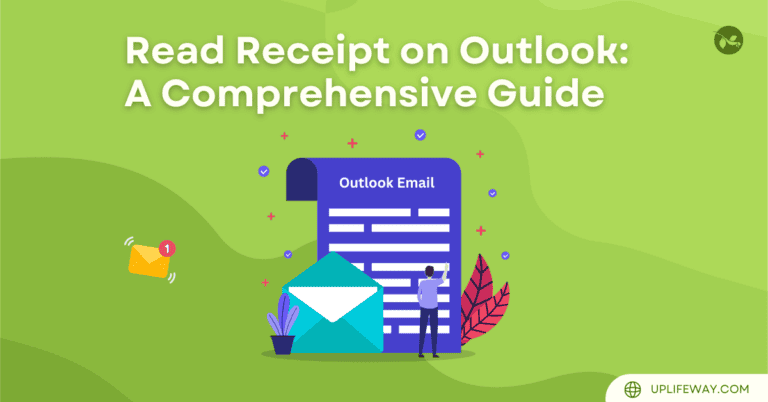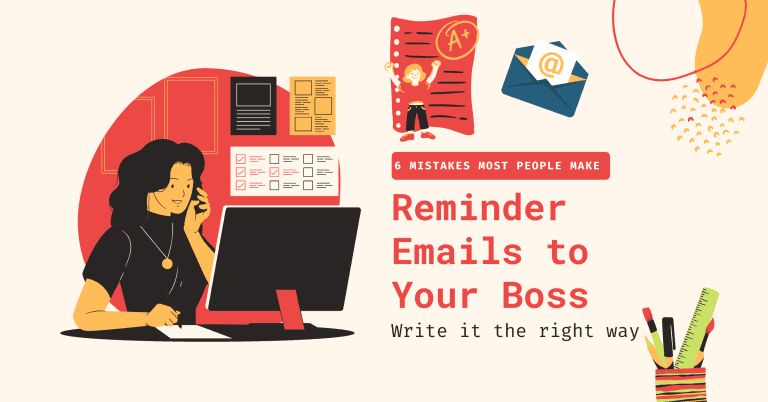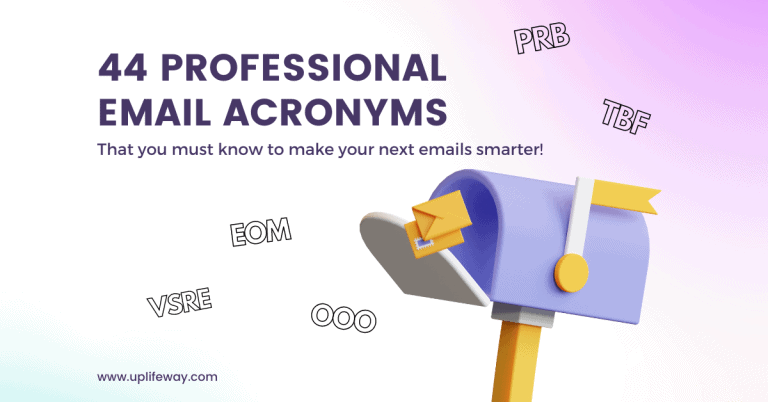How To Keep Your Emails Concise and to the Point | 3 Essential Tips for All Professionals!
Key Takeaway
Keeping emails concise and to the point is crucial for effective communication. It increases the chance of getting it to read and get things done. To achieve this, craft compelling subject lines, keep your email body focused, and utilize active voice and strong verbs for maximum impact. By embracing brevity, you’ll save time, improve clarity, and ensure your emails stand out in crowded inboxes.
Let’s face it, we’re all drowning in emails. Between work, personal messages, and the never-ending barrage of promotions, it feels like our inboxes are overflowing. The last thing anyone wants is to sift through a novel-length email just to get to the point. So, how do we break free from the shackles of wordiness and achieve email efficiency? The answer is simple: keep your emails concise and to the point!
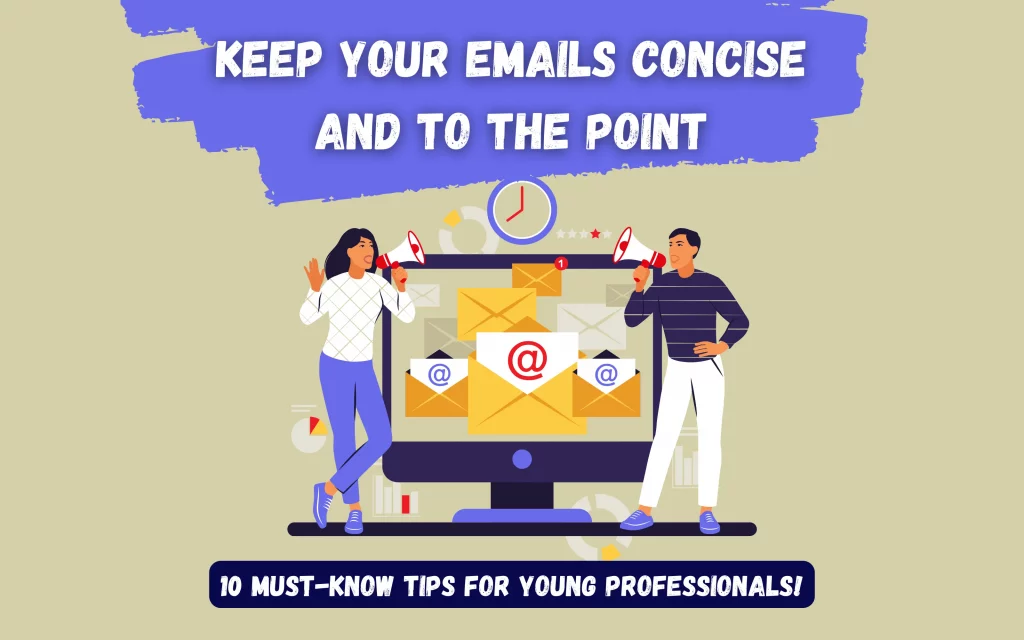
Why Keeping Emails Concise and to the Point is Important
Mailbird has found by a data-driven analysis of 91 million inquiries that 35% of the emails are left unread! This is not a surprise in a world where an average professional sends 40 and receives 121 emails per day. Each email is vying for attention, and the ones that are clear, concise, and direct are the ones that win the war. Here’s why:
- Respecting everyone’s time: In today’s fast-paced world, no one has time to decipher long-winded emails. Getting straight to the point shows respect for your recipient’s time and increases the likelihood of a prompt response.
- Boosting clarity and understanding: When you’re concise, your message is clear and easy to understand. This avoids confusion and ensures everyone is on the same page.
- Enhancing professionalism: A well-crafted, concise email exudes professionalism and competence. It shows you value efficiency and can communicate effectively.
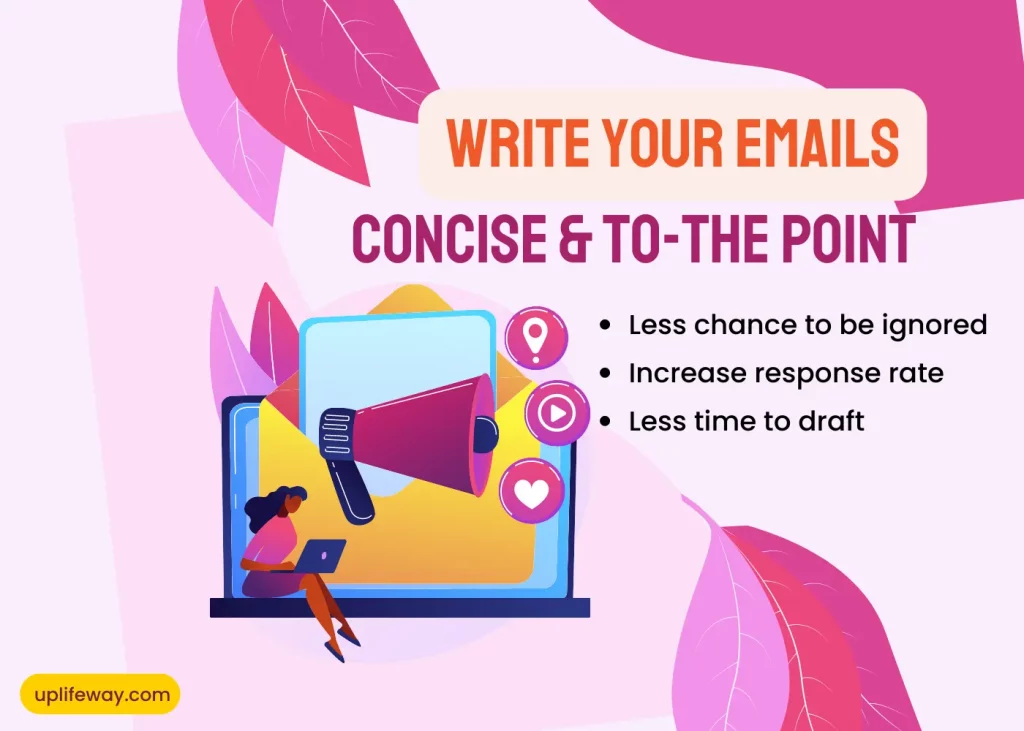
Crafting Concise Emails: Tips & Tricks
Now that we understand the importance of concise and to the point emails, let’s dive into some practical tips to transform your emails from verbose to victorious:
Subject Line: Your First Impression
People get a lot of emails daily, and many of them are never opened by their receivers! One thing that determines which email will be opened as soon as it arrives is the subject line. A study suggests that 47% of people who get emails open them just based on the subject line. At the same time, 69% of people who get emails report them as spam based on the subject line alone.
Think of your subject line as a movie trailer – it needs to grab attention and accurately reflect the content of your email. Avoid vague or generic phrases. Instead, be specific and action oriented. For example, instead of just “Meeting”, try “Meeting Regarding Project X on [Date]”.
Recommended Reading: Subject Line in Business Letter (Professional Email) | 5 Best Practices with Examples
Email Body: Short & Sweet
- Start with the main point: Don’t beat around the bush. State your purpose clearly in the first sentence.
- Keep it focused: Stick to one topic per email. If you have multiple issues to discuss, consider sending separate emails.
- Ditch the fluff: Avoid unnecessary greetings, apologies, and filler phrases. Every sentence should contribute to your message. You can use email acronyms and abbreviations instead of whole words if it makes sense. For example, writing “ASAP” will take much less space than “As soon as possible.”
- Embrace bullet points: When presenting multiple points or action items, use bullet points for easy readability.
- Active voice is your friend: Opt for active voice over passive voice. It makes your writing more direct and engaging. For example, instead of “The report was submitted by John”, say “John submitted the report”.
- Strong verbs pack a punch: Use strong verbs to convey your message with power and clarity. For example, instead of “I think we should consider…”, say “I recommend…”.
Proofread & Polish
Before hitting send, take a moment to proofread your email. Check for typos and grammatical errors, and ensure your tone is appropriate. Remember, your email represents you, so make sure it’s polished and professional.
Examples of Concise Emails
Enough with the theories. Now, let’s look at some real-life examples of concise and to-the-point emails.
Example 1: Follow-up email to check on a project’s progress.
Hi [Name],
I hope this email finds you well. I’m writing to follow up on our previous conversation about the upcoming project deadline. I was wondering if you could possibly provide an update on your progress and let me know if you have any questions or concerns that I can assist you with.
Thank you for your time, and I look forward to hearing from you soon.
Best Regards,
[Your Name]
Not recommended ❌
Hi [Name],
Could you please provide an update on your progress for Project X?
Let me know if you have any questions.
Best Regards,
[Your Name]
Recommended ✅
Recommended reading: Using Work Email for Personal Use is a Bad Thing – 5 Reasons Why?
Example 2: Rescheduling a meeting.
Subject: Meeting Postponed Due to Unavoidable Circumstances – New Time TBD
Hi Team,
I am writing to inform you that the meeting scheduled for tomorrow at 2 PM has been postponed due to unforeseen circumstances. We are currently working on rescheduling the meeting and will provide you with a new date and time as soon as possible. We apologize for any inconvenience this may cause.
Thanks,
[Your Name]
Not recommended ❌
Subject: Meeting Postponed – New Time TBD
Hi Team,
Tomorrow’s 2 PM meeting has been postponed. I’ll send an update with the new time ASAP.
Thanks,
[Your Name]
Recommended ✅
Recommended reading: How to Reply to an Email with a Meeting Invite in Outlook: The Ultimate Guide to Save Time & Avoid Confusion.
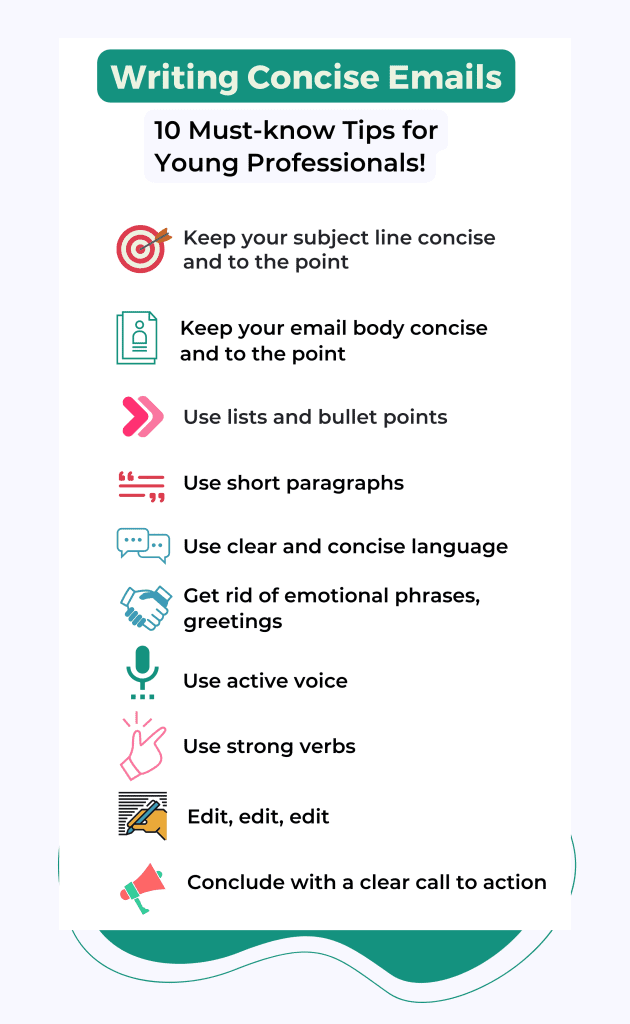
Conclusion: Embrace the Power of Brevity
Keeping your emails concise and to the point is a skill that benefits everyone. By following these tips, you can become a master of email efficiency, saving time, improving communication, and leaving a lasting impression of professionalism. Remember, in the world of emails, less is definitely more!
FAQ on how to write concise emails
-
What is a concise email (Concise email meaning)?
A concise email is an email that is short and to the point. It is free of any fluffy content, focusing on the objective of the email. The contents are organized in small paragraphs and sometimes bullet points to appeal to readers.
-
How do you write a concise email?
Keep your emails concise and to the point by following these simple tips:
1. Keep the subject line short and sweet.
2. Get straight to the point in the body of the email.
3. Use bullet points or short paragraphs to make your email easy to scan.
4. Avoid using unnecessary words or filler phrases.
5. Edit your email for clarity and conciseness before hitting send. -
What is an example of a concise sentence?
Below is an example of how an email can deliver the same message in elaborate and concise sentences.
Elaborated sentence:
“Send me a response to this email if you are unable to view the file for any reason. I will look into the matter.”Concise sentence:
“Please reply if you have trouble accessing the file.” -
Why concise email is important?
Concise email is important because it saves time for the sender and the recipient. It also eliminates the possibility of miscommunication. Above all, a concise and to-the-point email increases the chance of getting a response.
-
How do you write a clear email?
Write a clear email following these steps:
1. Write a clear and to-the-point email subject.
2. Divide the main email body into 5 sentences or fewer. Use bullet points where applicable.
3. Avoid unnecessary details, greetings, or superfluous words.
4. Conclude with a clear call to action (CTA).
5. Proofread your email before sending it. -
How do you write a short email?
You can write a short email using fewer words and keeping your message clear and concise. You can use bullet points, short sentences, and simple language. You should also avoid unnecessary words and phrases and stay to the point. In the beginning, this won’t be easy. One way to do this is to pretend, like in the old days of telegrams, that you must pay for every word you add. This may sound like a silly mental exercise, but it can help you build a habit of eliminating words and phrases that aren’t needed. There is no ready-made concise email template.

“Hey there, welcome to UplifeWay.com! I’m Rifat Hossain, a Microsoft 365 certified trainer with a background in Advanced Engineering Management. Currently, I’m navigating the tech landscape as the Digital Services Manager at Coats, providing a unique perspective on technology in the professional world.
My journey, fueled by a passion for helping others, has led to the creation of this blog. UplifeWay.com is your go-to source for mastering Microsoft Office applications and elevating your digital literacy. Join me on the exciting journey of smart productivity at UplifeWay.com – let’s explore the world of tech together!”



